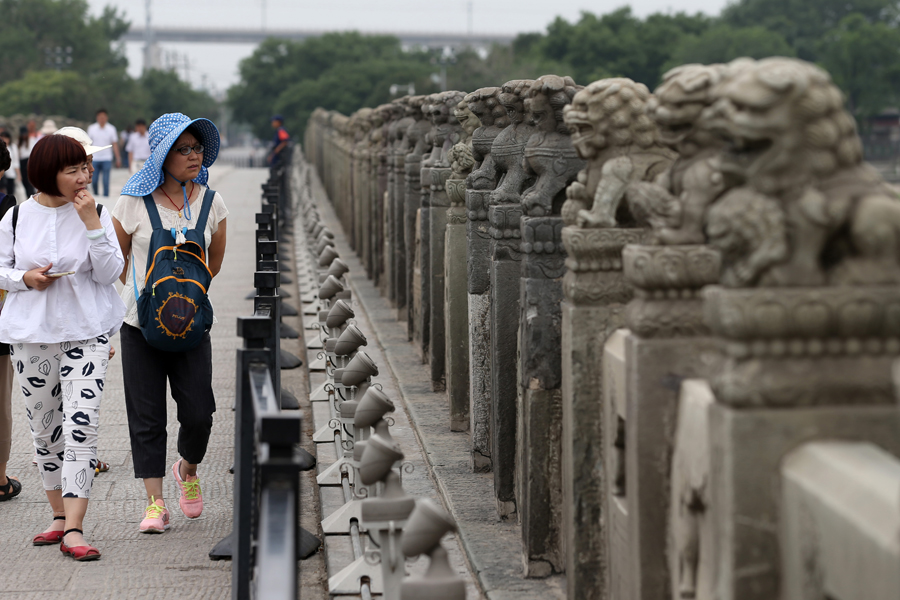The conflic that changed China
Updated: 2017-07-07 07:31
By Zhao Xu(China Daily)
 |
|
Tourists examine the stone lions at the Lugou Bridge in south Beijing. WANG ZHUANGFEI/CHINA DAILY |
"We did this a couple dozen times before we reached our camp at the other end of the airfield. Of the 120 people in our group, only about 40 made it."
The students tried to move further north, into Beijing, but the Japanese had cut off the shortest route, so they had to detour, ducking into expansive fields of sorghum, before eventually arriving at the Zuo'an Gate, one of the entry points to the capital.
"Chinese soldiers guarding the gate tower shouted down to us, saying they had orders not to let anyone in. Gunfire erupted as we spoke: the Japanese were coming! The next minute, we jumped into a roadside trench and provided supporting fire for those in the tower until the Japanese retreated," Liu recalled.
Still refused entry, Liu and his group traveled further west to the Yongding Gate, where, after being given permission by headquarters, the defenders used wicker baskets to lift them over the wall and into the city, one by one. At this point, only 30 of the soldier students were still alive.
"Once inside, we were surrounded by crowds of people who applauded our bravery. But all we felt was guilt: the Nanyuan Airport was lost," he said. Beijing fell the next day, and Tianjin was captured on July 30, signaling the start of Japan's eight-year invasion.
A heavy price
Between 1937 and 1945, about 2.6 million young men-including Wang Jiantang, the recipient of the farewell letter-left their homes in the southwestern province of Sichuan to fight the Japanese; 640,000 never returned.
The War of Resistance Against Japanese Aggression (1937-45) ravaged the land, but also united the Chinese, irrespective of political affiliation.